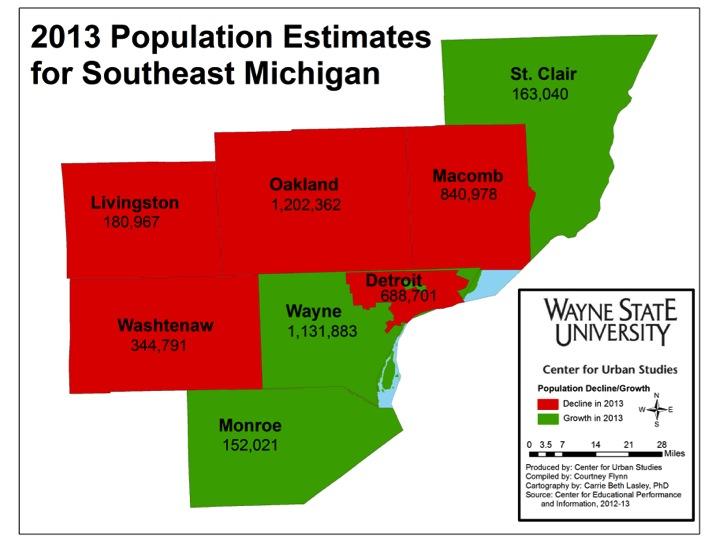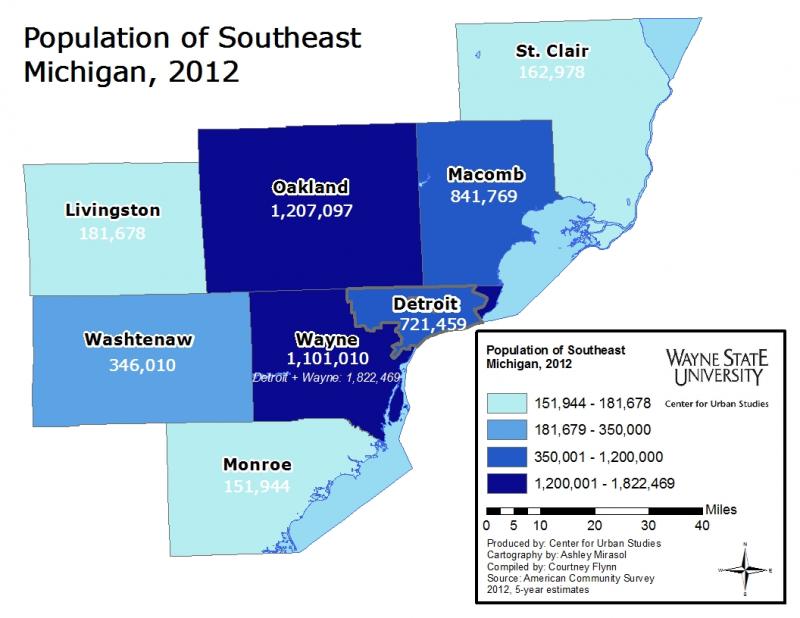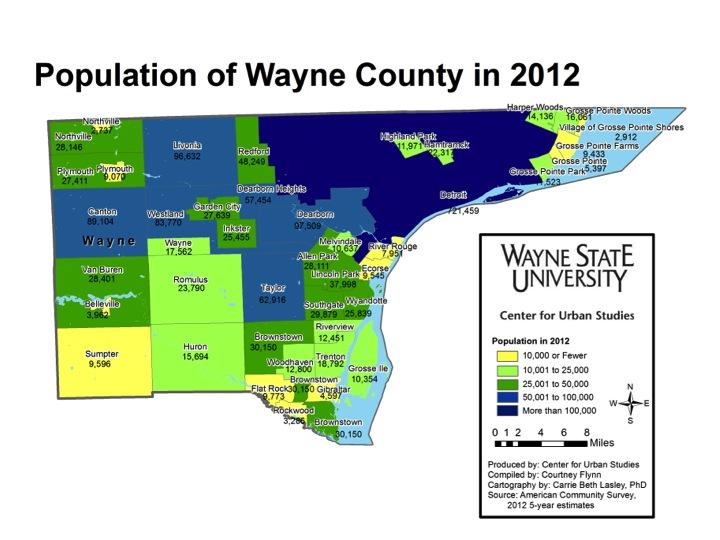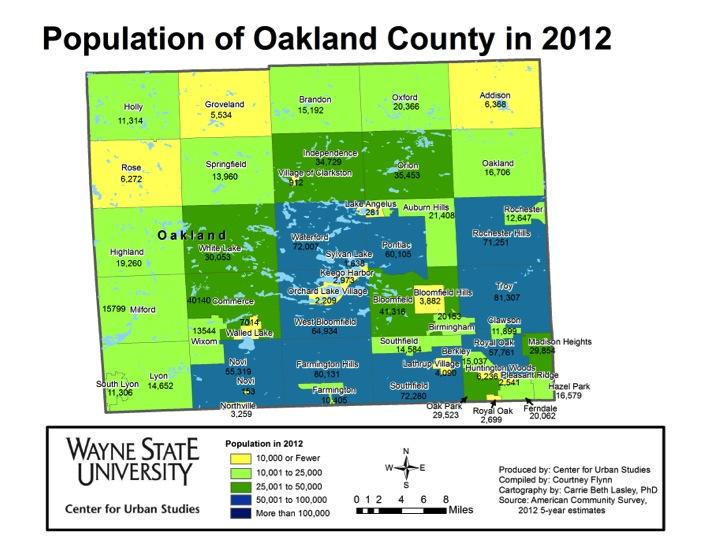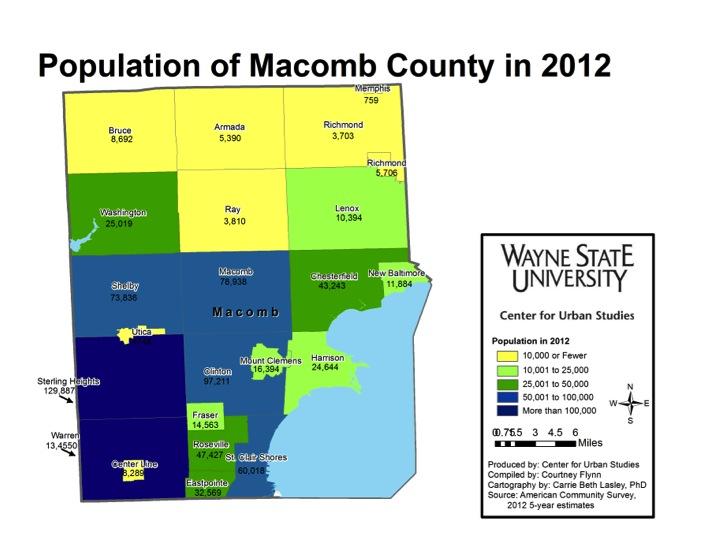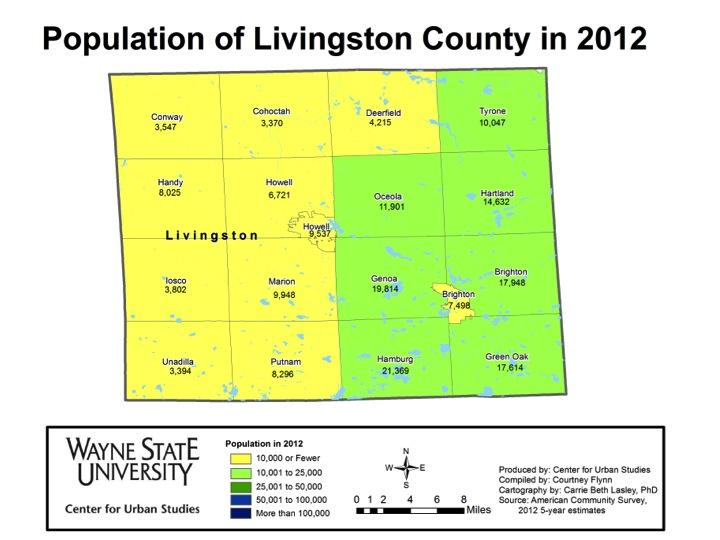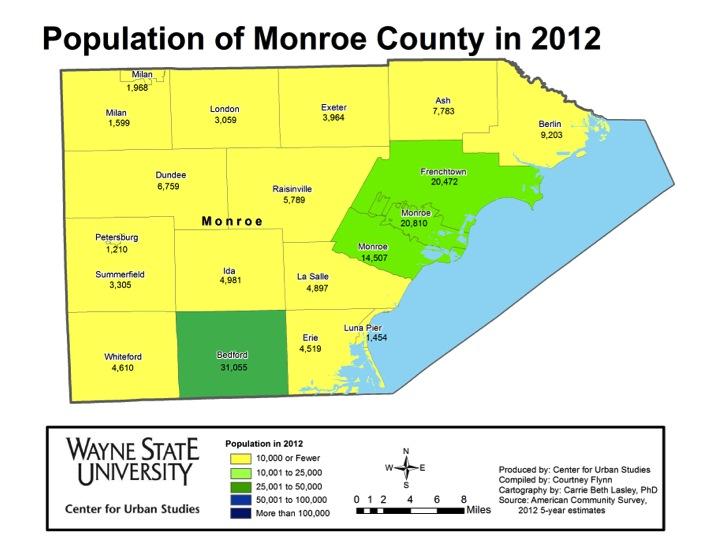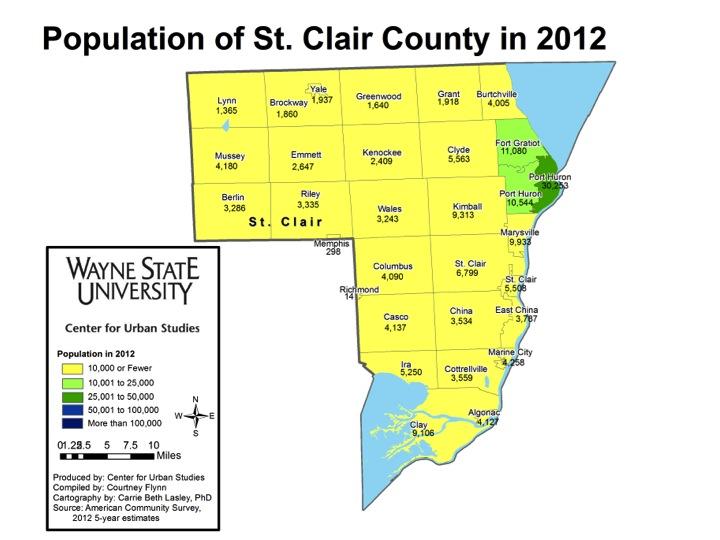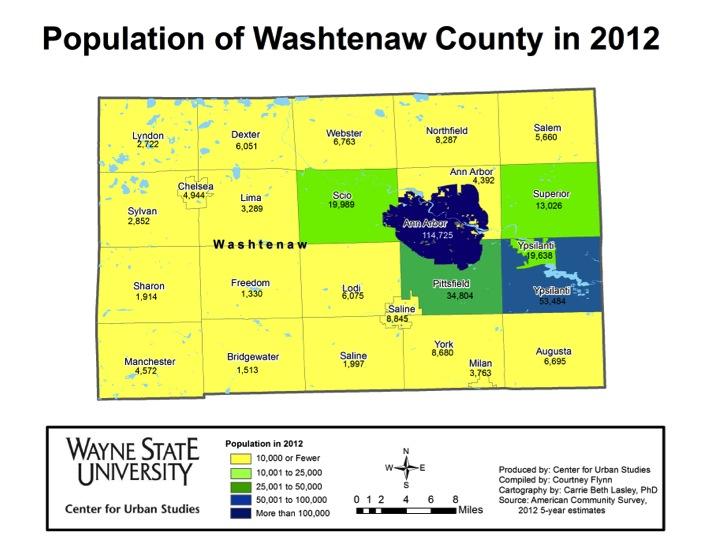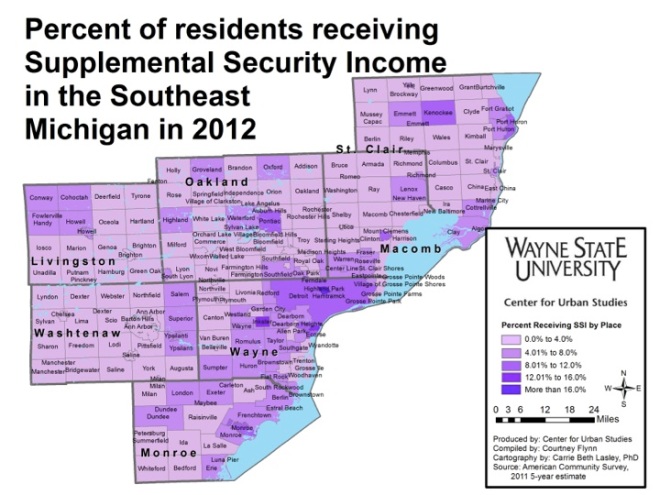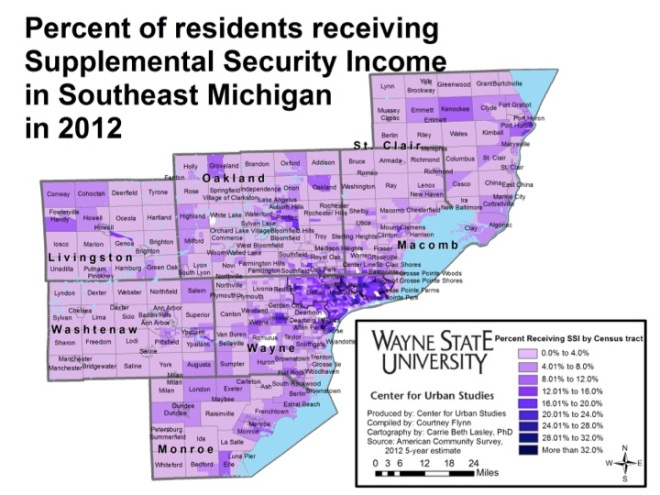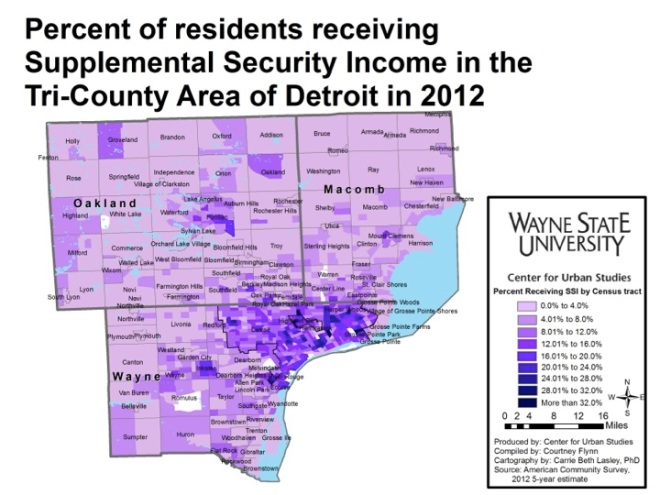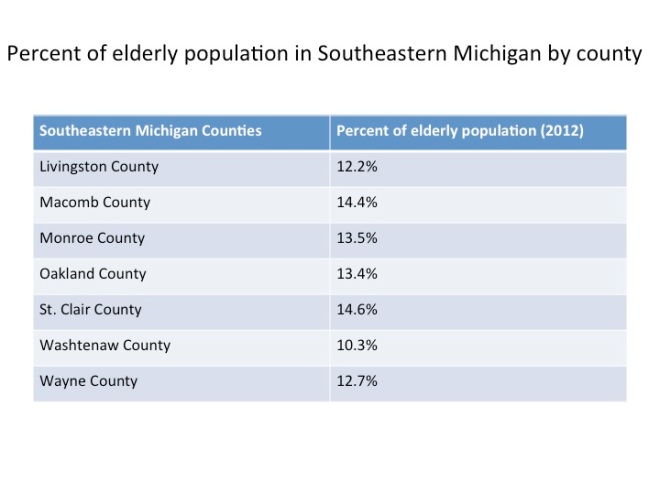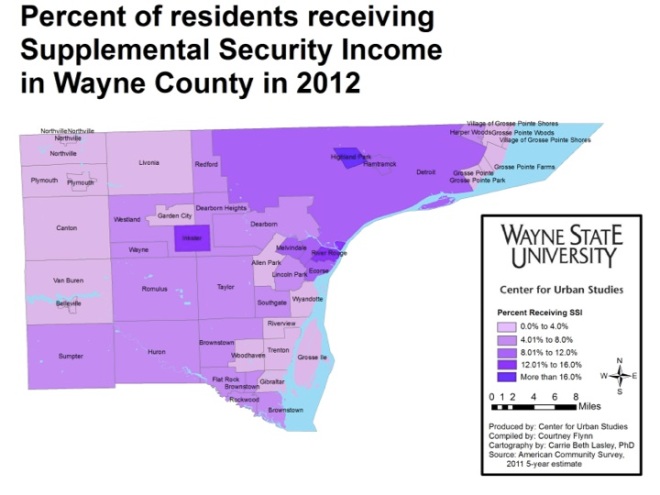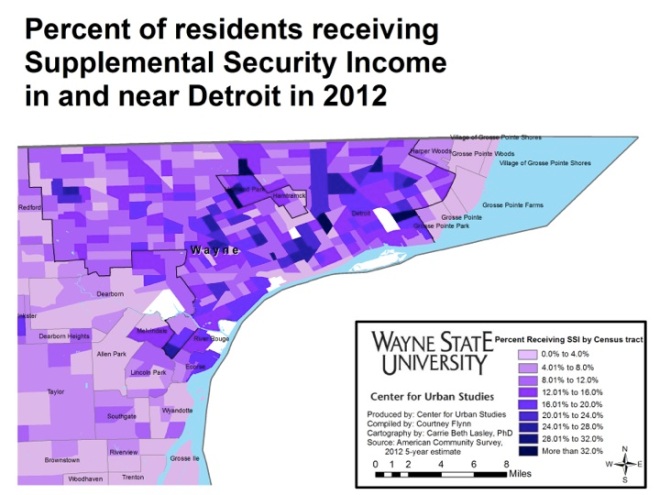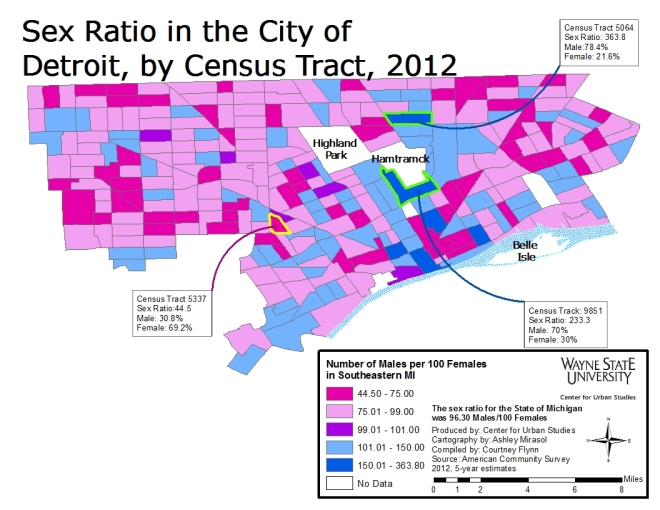With a weak public transportation system in Southeastern Michigan, access to a vehicle is critical for the commuting to and from work, school and other necessary places. In this post we examine the average number of vehicles residents in Southeastern Michigan residents have access to. The maps will show that at the county level the more rural counties have workers with more access to a vehicle, but at the census tract level it is the wealthier areas with a higher access number.
Data for this post was received from the 2012 American Community Survey. All workers age 16 and above in a household were considered when determining the average number of vehicles a worker has access to.
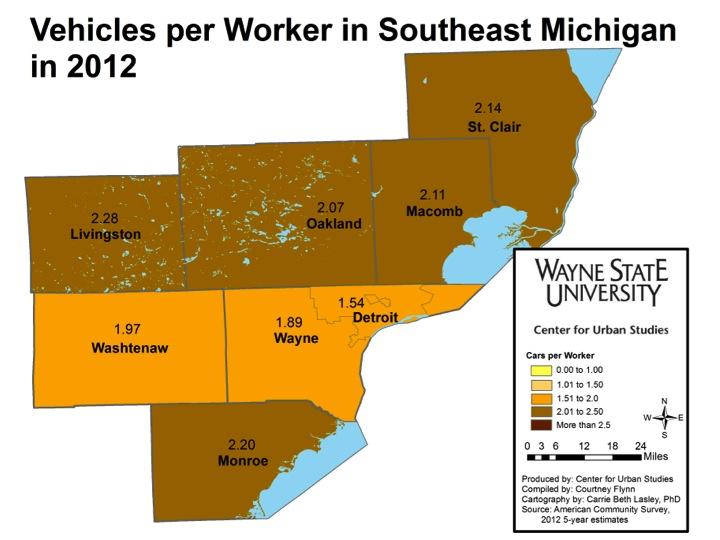
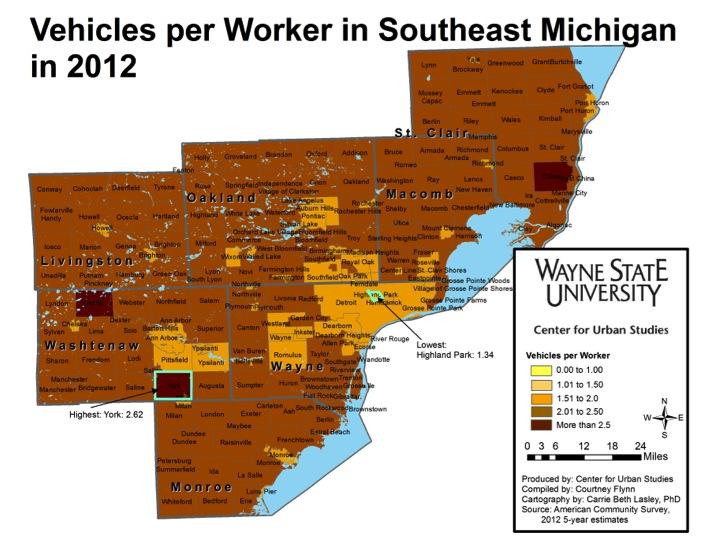
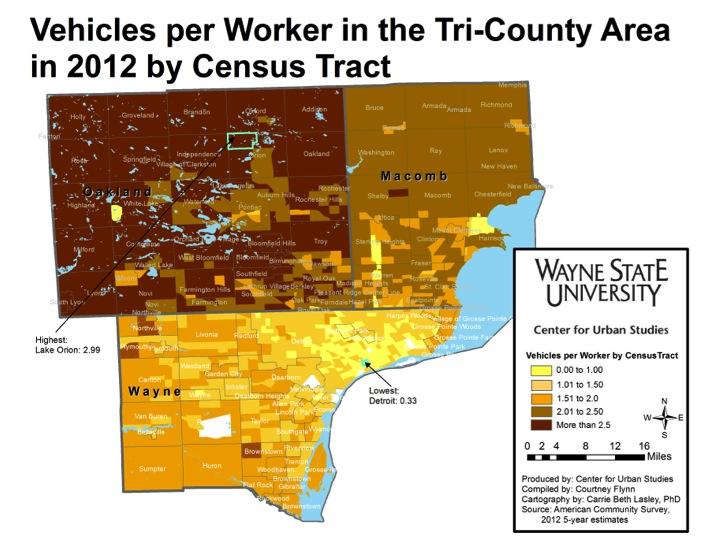
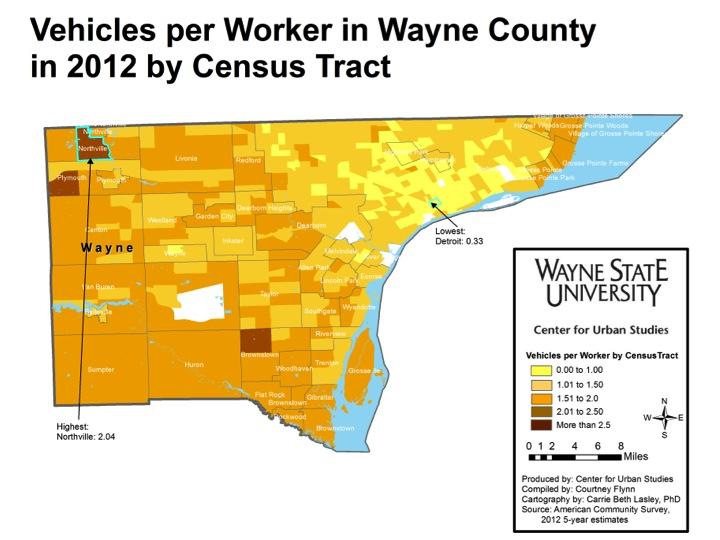
In 2012, in every county in the region, there was, on average, at least one vehicle or more per worker. When examined at the municipal level, even Detroit, where there was less than one car per worker in many census tracts, the average number of vehicles per worker was 1.54.
Livingston and Monroe counties, which are both rural, averaged access to the highest number of vehicles per worker in the region. Livingston County averaged access to 2.28 vehicles per worker in 2012 and Monroe County averaged access to slightly less, with 2.20. Wayne County had the lowest average access to vehicles per worker in the region. The average in 2012 was 1.89.
A closer look at the municipalities in the region shows that Highland Park had the lowest access average to the number of vehicles per worker in the region. This access number was 1.34 vehicles per worker. York Township in Washtenaw County averaged access to 2.62 vehicles per worker, making it the municipality with the highest average in the region.
When examining this data at the census level, there are clear differences between the counties in the tri-county area in terms of access to vehicles per worker. Overall, a majority of the census tracts in Oakland County, particularly those in the northern, western and eastern sides of the county, averaged access to more than 2.5 vehicles per worker. While the majority of census tracts in Macomb County had workers with access to over 2 vehicles per worker, only one, located in Shelby Township, had workers with access to 2.5 vehicles or more per worker. In Wayne County, there were no census tracts where workers had to access to, on average, more than 2.5 vehicles. However, one tract in Detroit had an average of 0.33 vehicles per worker. Viewing cars as a critical asset and a de facto necessity for getting work in a region where jobs are sprawled throughout the metropolitan area, these data clearly represent another dimension of the mal-distribution of resources across these seven counties.
